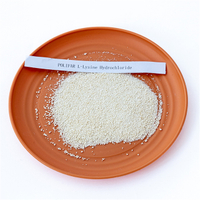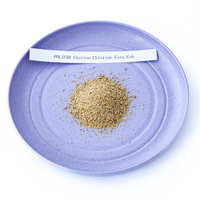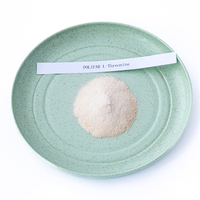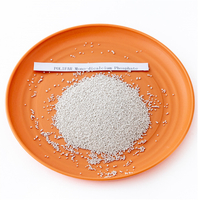| Availability: | |||||||||
|---|---|---|---|---|---|---|---|---|---|
| Maduramicin Ammonium Premix is a powerful ionophore coccidiostat used in poultry feed to prevent coccidiosis. It helps improve growth performance, reduce mortality, and ensure flock health during critical production stages. | |||||||||
Maduramicin Ammonium Premix is an ionophore coccidiostat widely used in poultry farming to prevent and control coccidiosis, a parasitic disease caused by Eimeria species. It works by disrupting the ion balance in protozoal cells, effectively inhibiting the growth and reproduction of coccidia.
This product is typically added to poultry feed in a uniform and stable premix form to ensure even distribution and consistent dosing.
Key Features:
Active Ingredient: Maduramicin Ammonium
Appearance: Light brown granular or powder premix
Function: Effective control of avian coccidiosis
Application: Broilers, turkeys, and other poultry
Dosage: Follow veterinary or manufacturer’s guidelines (typically 5–7 ppm in complete feed)
Withdrawal Period: Usually 5 days before slaughter (varies by regulation)
Benefits:
High efficacy against major Eimeria species
Enhances poultry health and feed efficiency
Helps reduce mortality and improve flock uniformity
Suitable for continuous use during risk periods
Usage Scenarios:
1. Control of Coccidiosis in Broilers
Primarily targets infections caused by six common pathogenic Eimeria species (tender, toxic, giant, agglomerate, Brucella, and precocious). It is particularly suitable for use as a feed additive during high-incidence periods (such as during hot and humid seasons) to prevent early infection and outbreaks.
Critical Timing: Suitable for use from chick to market, but contraindicated in laying hens.
2. Control of Drug-Resistant Coccidia
It is highly effective against coccidia strains that have developed resistance to other polyether antibiotics (such as monensin and salinomycin), making it suitable for flocks experiencing recurrent disease or in which conventional drugs have failed.
3. Synergistic Effects of Combination Preparations
It is often combined with nicarbazin to enhance the insecticide spectrum (especially against cecal coccidia) and mitigate the heat stress side effects of nicarbazin alone. Combination preparations have been shown to increase weight gain (up to 104.42% in trials) and improve the anticoccidial index (ACI) of 195.53.
4. Epidemic Prevention in High-Density Farms
Suitable for large-scale chicken farms, this method allows for group dosing via premixed feed, reducing the risk of contact transmission. This is particularly beneficial in environments where ground-based chickens are raised and litter is easily contaminated.
Core Selling Points:
1. High Efficiency and Broad Spectrum
Strong Antimicrobial Activity: Acts directly against coccidia sporozoites and early schizonts, directly killing rather than inhibiting them. It is known as the "most active antibiotic against coccidial disease to date."
Wide Species Coverage: Effective against nine common coccidia species, including the easily overlooked Eimeria desmodiosum.
2. Low Residue and Regulatory Compliance
With a short half-life (approximately 24 hours), no residue is detected in chicken or offal five days after discontinuation of the drug, meeting food safety requirements.
The withdrawal period is only 5-7 days, facilitating pre-market scheduling.
3. Improved Economic Benefits
Reduced Mortality: Standardized use can control coccidiosis outbreaks and flock mortality.
Improved Feed Conversion Rate: Promotes growth, reduces nutrient absorption impairment caused by coccidia, and increases weight gain.
4. Advanced Advantages of Combination Formulations
Drug Resistance Management: Maduramicin ammonium + Nicarbazine combination delays the development of drug resistance and extends the drug's lifespan.
Seasonal Adaptability: This overcomes the limitation of Nicarbazine alone in inducing heat stress during hot seasons, making it highly suitable for summer use.
Maduramicin Ammonium Premix is an ionophore coccidiostat widely used in poultry farming to prevent and control coccidiosis, a parasitic disease caused by Eimeria species. It works by disrupting the ion balance in protozoal cells, effectively inhibiting the growth and reproduction of coccidia.
This product is typically added to poultry feed in a uniform and stable premix form to ensure even distribution and consistent dosing.
Key Features:
Active Ingredient: Maduramicin Ammonium
Appearance: Light brown granular or powder premix
Function: Effective control of avian coccidiosis
Application: Broilers, turkeys, and other poultry
Dosage: Follow veterinary or manufacturer’s guidelines (typically 5–7 ppm in complete feed)
Withdrawal Period: Usually 5 days before slaughter (varies by regulation)
Benefits:
High efficacy against major Eimeria species
Enhances poultry health and feed efficiency
Helps reduce mortality and improve flock uniformity
Suitable for continuous use during risk periods
Usage Scenarios:
1. Control of Coccidiosis in Broilers
Primarily targets infections caused by six common pathogenic Eimeria species (tender, toxic, giant, agglomerate, Brucella, and precocious). It is particularly suitable for use as a feed additive during high-incidence periods (such as during hot and humid seasons) to prevent early infection and outbreaks.
Critical Timing: Suitable for use from chick to market, but contraindicated in laying hens.
2. Control of Drug-Resistant Coccidia
It is highly effective against coccidia strains that have developed resistance to other polyether antibiotics (such as monensin and salinomycin), making it suitable for flocks experiencing recurrent disease or in which conventional drugs have failed.
3. Synergistic Effects of Combination Preparations
It is often combined with nicarbazin to enhance the insecticide spectrum (especially against cecal coccidia) and mitigate the heat stress side effects of nicarbazin alone. Combination preparations have been shown to increase weight gain (up to 104.42% in trials) and improve the anticoccidial index (ACI) of 195.53.
4. Epidemic Prevention in High-Density Farms
Suitable for large-scale chicken farms, this method allows for group dosing via premixed feed, reducing the risk of contact transmission. This is particularly beneficial in environments where ground-based chickens are raised and litter is easily contaminated.
Core Selling Points:
1. High Efficiency and Broad Spectrum
Strong Antimicrobial Activity: Acts directly against coccidia sporozoites and early schizonts, directly killing rather than inhibiting them. It is known as the "most active antibiotic against coccidial disease to date."
Wide Species Coverage: Effective against nine common coccidia species, including the easily overlooked Eimeria desmodiosum.
2. Low Residue and Regulatory Compliance
With a short half-life (approximately 24 hours), no residue is detected in chicken or offal five days after discontinuation of the drug, meeting food safety requirements.
The withdrawal period is only 5-7 days, facilitating pre-market scheduling.
3. Improved Economic Benefits
Reduced Mortality: Standardized use can control coccidiosis outbreaks and flock mortality.
Improved Feed Conversion Rate: Promotes growth, reduces nutrient absorption impairment caused by coccidia, and increases weight gain.
4. Advanced Advantages of Combination Formulations
Drug Resistance Management: Maduramicin ammonium + Nicarbazine combination delays the development of drug resistance and extends the drug's lifespan.
Seasonal Adaptability: This overcomes the limitation of Nicarbazine alone in inducing heat stress during hot seasons, making it highly suitable for summer use.






